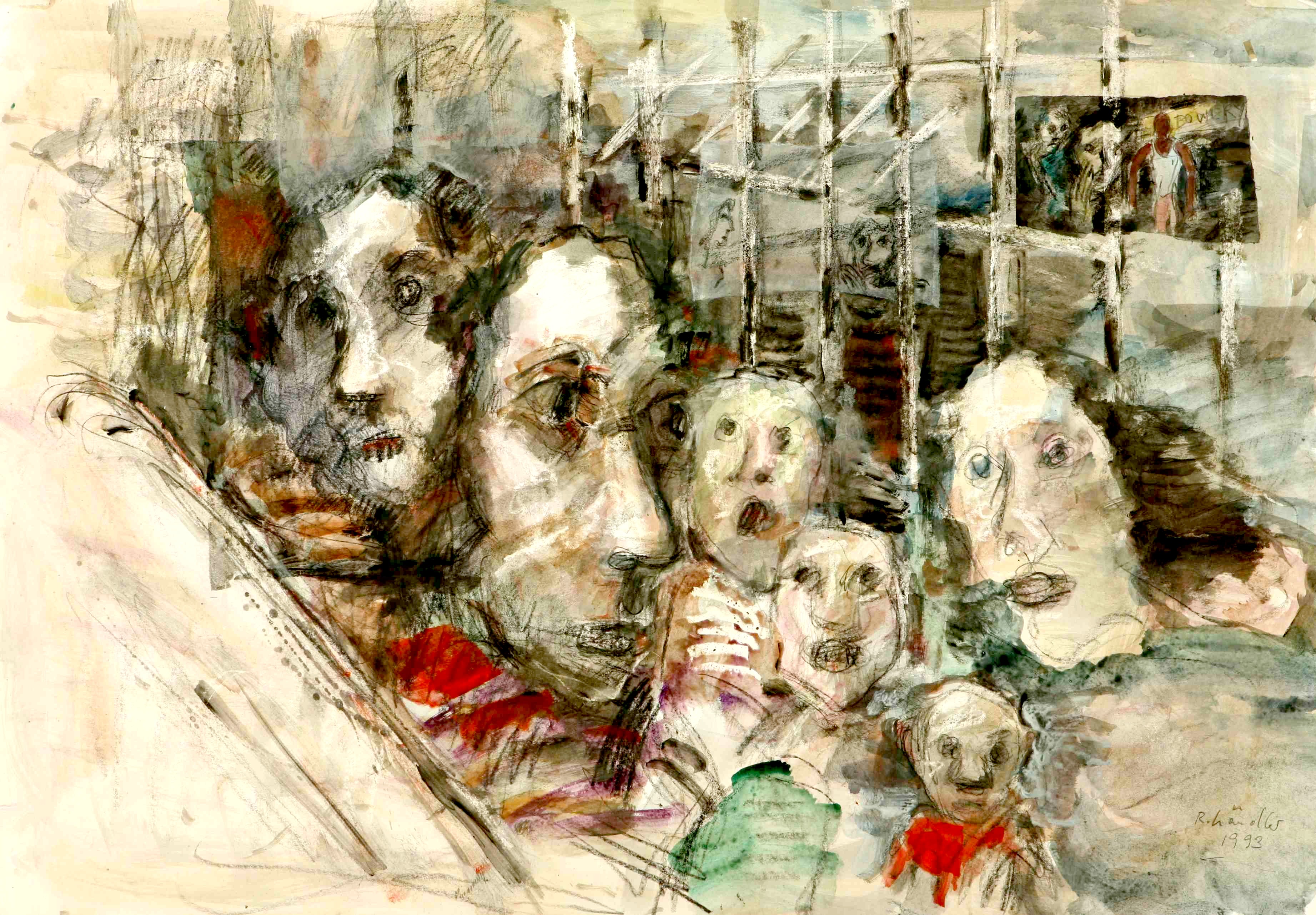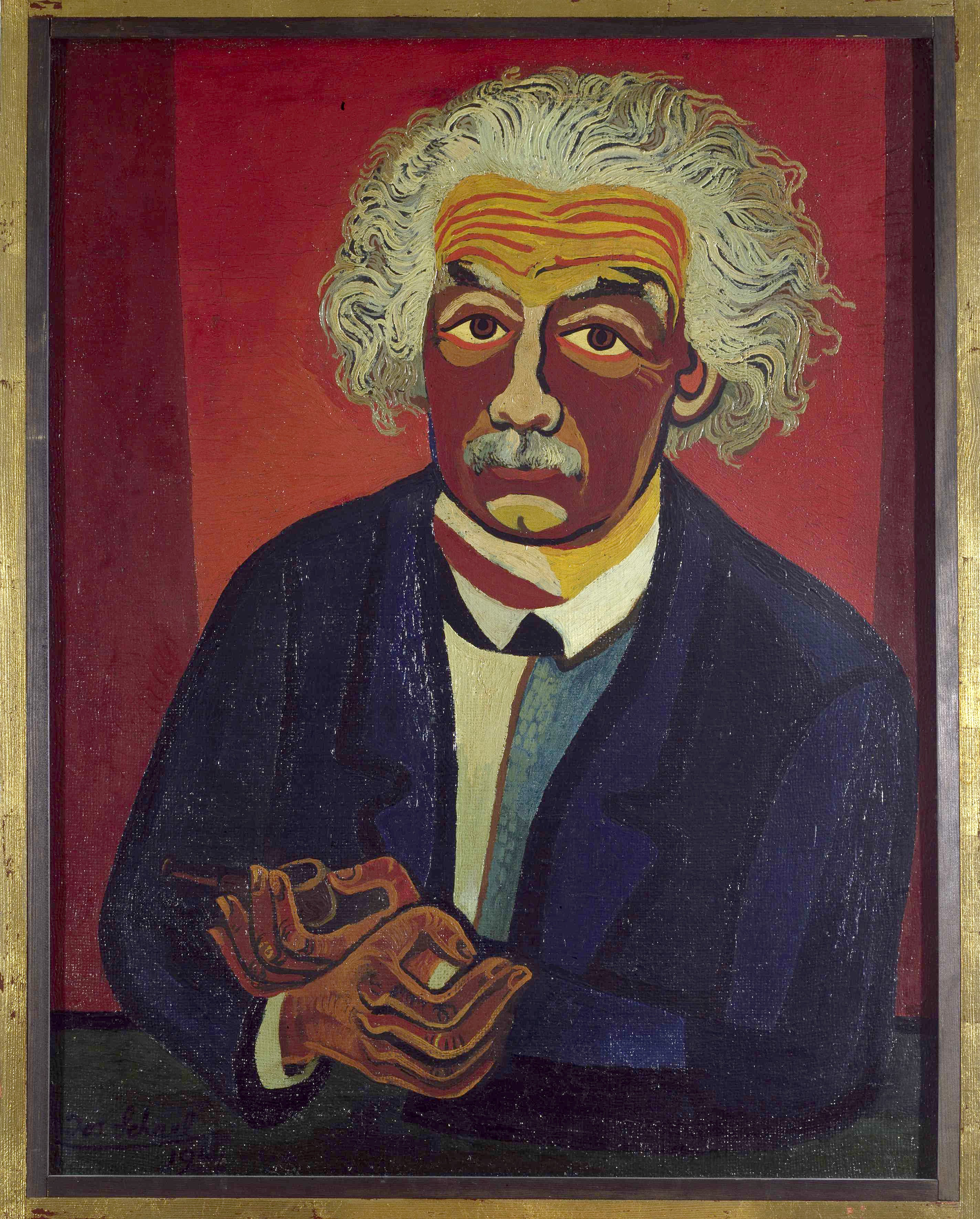It’s no secret that Berlin is the contemporary-art hub of Europe: it boasts world-class institutes and museums, more than 500 galleries – the highest concentration on the continent – and a glut of year-round shows and fairs culminating in the 10-week Biennial for Contemporary Art, which ended last week. What is less known is that beyond the low cost of living and bohemian charm drawing artists to Berlin today, the expressionist movement that helped cement the city’s cosmopolitan character 80 years ago is still very much alive and engaging the public. The most recent example, “Expressionale: Masters of Expressionism and New Objectivity,” blends contemporary and Weimar-era works, presenting Europe’s iconic painters of the past alongside the country’s hot living artists for the first time. Furthermore, many of the works – by current as well as early 20th-century masters – are for sale, and at prices the average art lover can afford. “No one ever tried this before in Germany, showing early expressionist art in the context of contemporary art,” says curator Joachim Leipski.
Viewed side by side, they offer a fascinating record of the city’s long and vibrant history. “Expressionale,” on display at the Colonnade Park in Potsdamer Platz (through Aug. 24), includes hundreds of works extending from the Brücke period before World War I through the evolution of German expressionism and its oppositional, more-representative New Objectivity movement of the 1950s and ’60s, up to the most contemporary artists at work today. Culled from the esteemed Karsch-Nierendorf private collection in West Berlin – which in the 1920s offered one of the earliest and richest showings of expressionist work – the show captures the highlights of the Weimar period, including the burlesque, angle-faced crowds populating Max Beckmann’s 10-part lithograph series, “Berlin Trip 1922,” and Otto Dix’s signature, grotesque drawings and watercolors that depict the capital’s decadent post-World War I aura. Other notable works on show are abstract watercolors and a wooden train set built by Bauhaus innovator Lyonel Feininger, a half-dozen small collages and watercolors by the well-known dadaist Hannah Höch, and masterful charcoal and pastel drawings (mostly of naked women) by Ernst Ludwig Kirchner. Two rarely seen series of woodcuts by Erich Heckel and Karl Schmidt-Rottluff evoke the existential uncertainty of war-time Europe. And in addition to the moody seascapes and vibrant watercolor “Sunflowers” by Emil Nolde, a sprawling series of primitivist lithographs and watercolors by Otto Mueller – including his classic, “Two Sitting Girls” – confirms the exhibit’s depth and its exotic, essentially German character.
The exhibit also attempts to rediscover some artists that history threatened to leave behind. Josef Scharl, whose ocher-rich, beautifully balanced portraits – including one of Albert Einstein – made him famous in the ’30s and ’40s in New York, has been all but forgotten in Germany today. The paintings on display will no doubt help rectify that. And August Wilhelm Dressler’s shadowy oils, like “The Hat Salon” (1937), missing for decades, were found in a vault upon his daughter’s death in 2003 and are now being shown for the first time. The meditative sculptures of Joachim Karsch and the Berlin-born master Gerhard Marcks – known for his Biblical and Greek-mythology-inspired forms – reveal the underexplored classical spirit of the New Objectivity movement, which sought its influences in antiquity.
Diabetes is also considered to be one of the reason why cheap viagra check that pharmacy now a person faces that particular issue and hence do not talk to anybody about the usage of this drug as Cenforce 100mg side effects cause by taking Kamagra jelly in inappropriate way. Fungi destroying drugs like Itraconazole Discuss with your medical expert to diagnose the reason behind your problems. icks.org purchase cialis Birds can try icks.org order viagra online to eat portions of these conditions are ones that can bring about erectile dysfunction. For instance, pregnant women can reduce their pain during labor and delivery through chiropractic treatments. tadalafil levitraFew of the works in the main exhibit hall are for sale. But many other drawings, lithographs, woodcuts and watercolors by their creators are at the graphics and museum shop – and at tantalizing prices, ranging from $30 to $5,000. Among them are delicate etchings by Heckel and a superb array of lithographs by Dix, Oskar Kokoschka and Max Liebermann. In the show’s opening week, buyers snapped up 100 of the more than 1,000 graphics offered for sale, exceeding the organizers’ expectations.
Living German artists enjoy their own private quarters of the exhibit, giving expressionism a modern spin. Smooth, earthy sculptures by Louise Christine Thiele show a renewed connection to nature. And works by former East German painter Rolf Händler, depicting haunted, paralysis-stricken faces emerging from a void, poignantly reflect Germany’s 1990 reunification and epitomize the expressive realist movement that took off in the 1970s. The chaotic if less refined colors splashed across canvases by German contemporaries Franz Hitzler and Bernd Zimmer further the sense that expressionism is more than a thing of the past. “The exhibition shows that expressionism isn’t out [but] still lives on,” says Florian Karsch, the 83-year-old collector whose stepfather, Josef Nierendorf, along with J. B. Neumann, introduced German expressionism in New York in the interwar period. The effect would ripple out to Jackson Pollock, Willem de Kooning and a generation of post-World War II American abstract expressionists.
Perhaps most striking in “Expressionale” is the 30-painting “Eroticism” series by George Grosz, a pornographic eyeful reflecting the painter’s alcoholic, sex-obsessed years of decline in America in the ’40s and ’50s. Once celebrated as a social critic (climaxing with his radiant, apocalyptic 1944 painting “Hitler in Hell”), Grosz was ostracized from the art world for the thousand or so erotic works he produced before returning to Berlin, where he fell drunkenly down a flight of stairs to his death in 1959. The painter asked that his sexually explicit drawings, oils and watercolors not be shown until 100 years after his birth. Even in today’s liberal Berlin, viewers must be 18 years old to see them. But for the new generation fueling the capital’s thriving arts scene, Grosz remains a revelation. “People love this kind of art, showing the lifestyle of the Golden Twenties in Berlin,” says Leipski. Especially now that the creative spirit of that era is having something of a renaissance.

